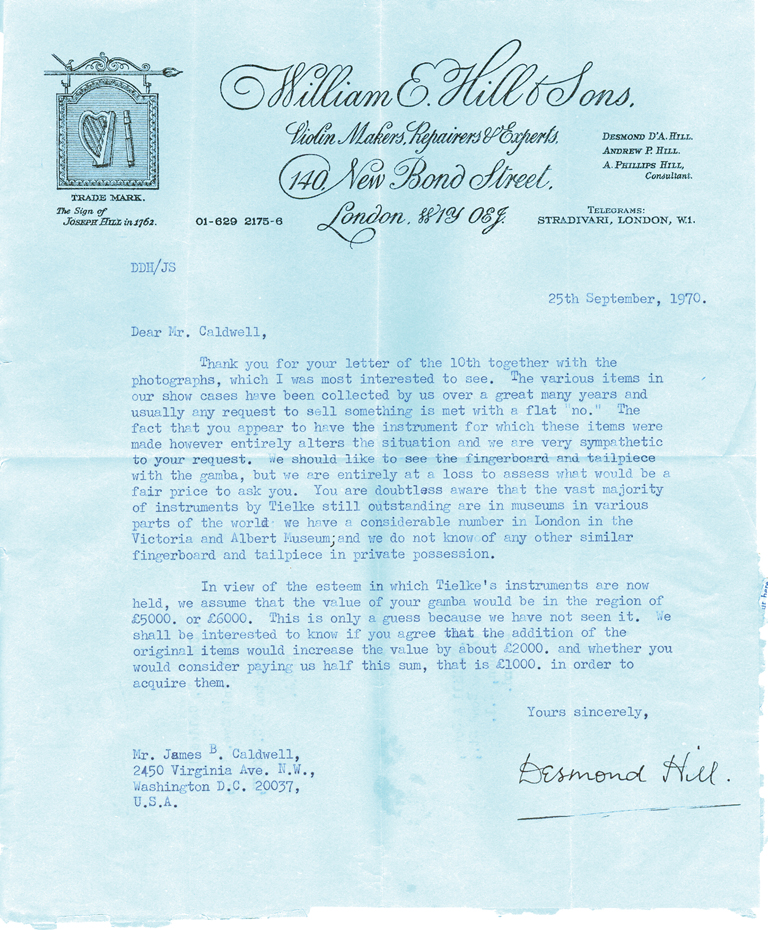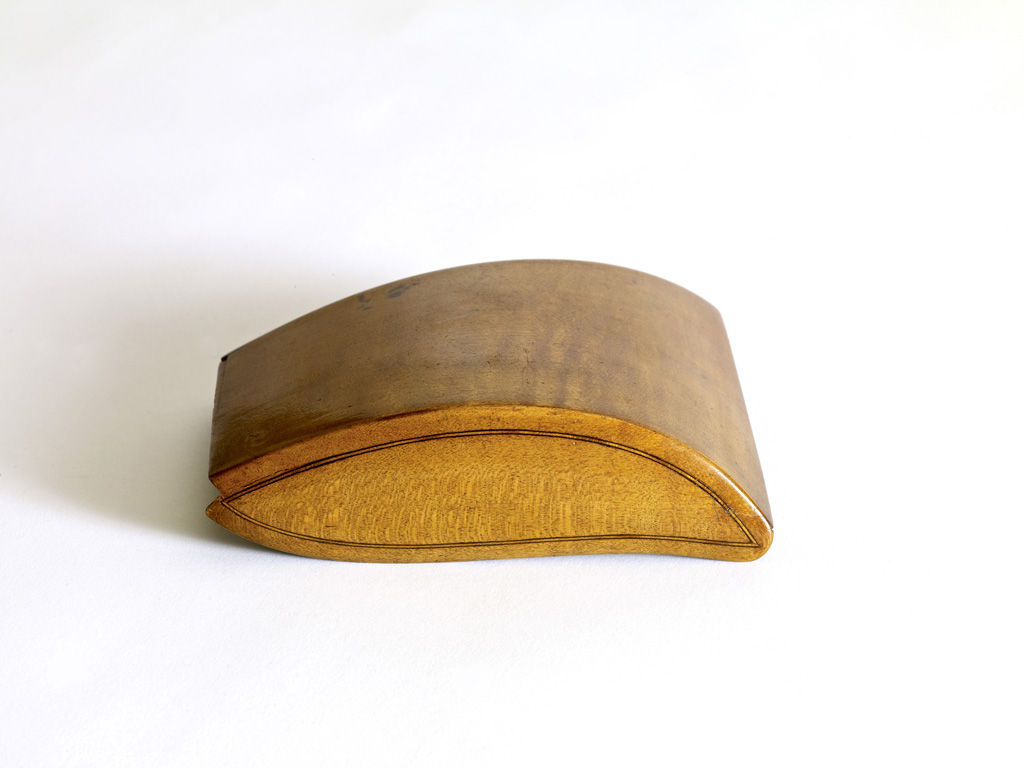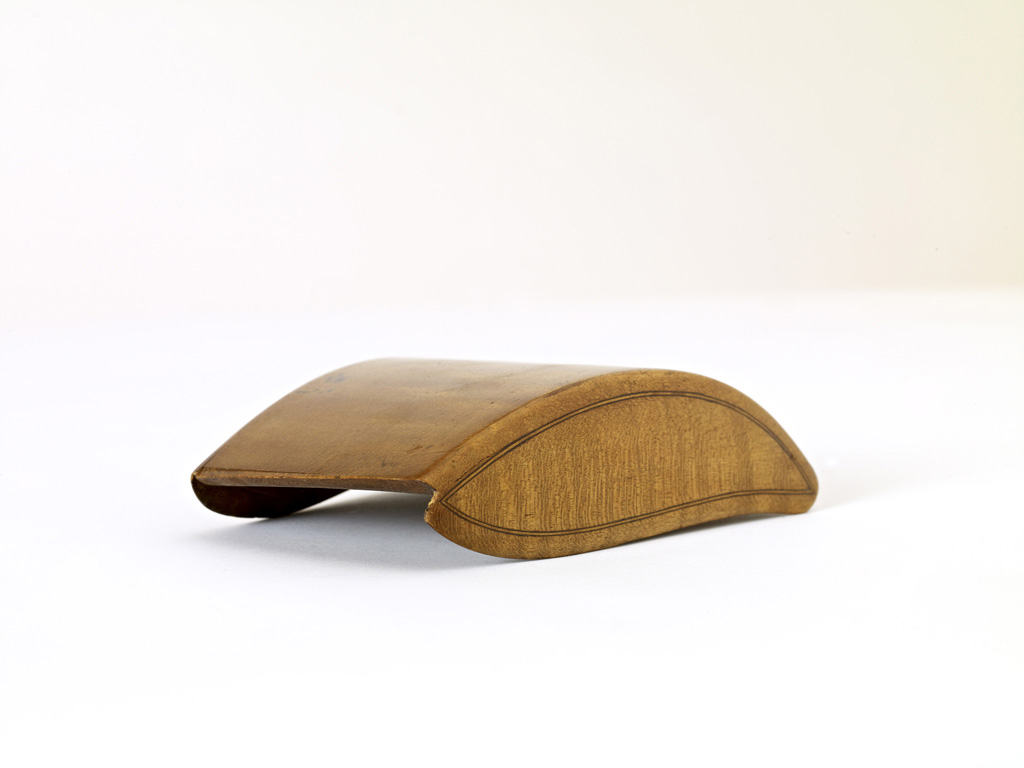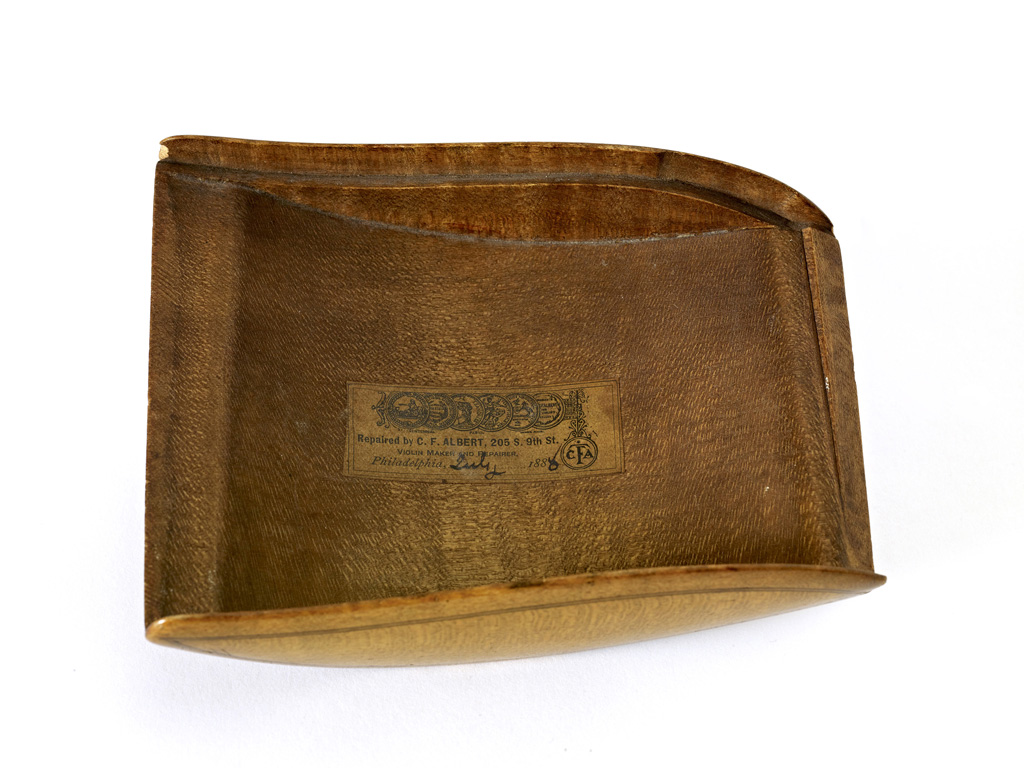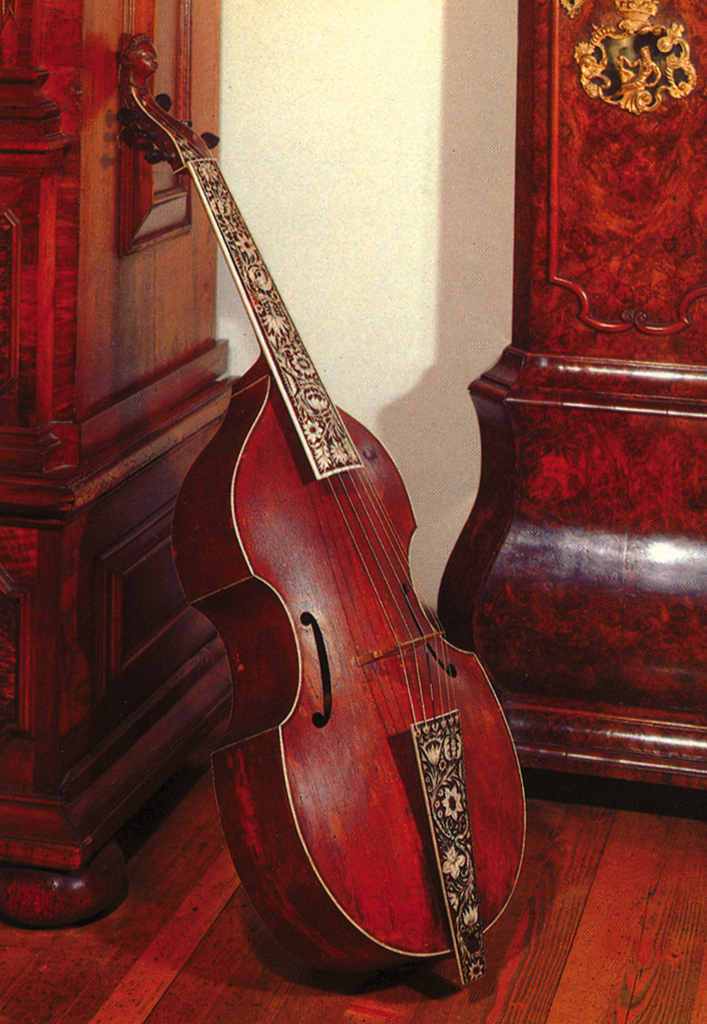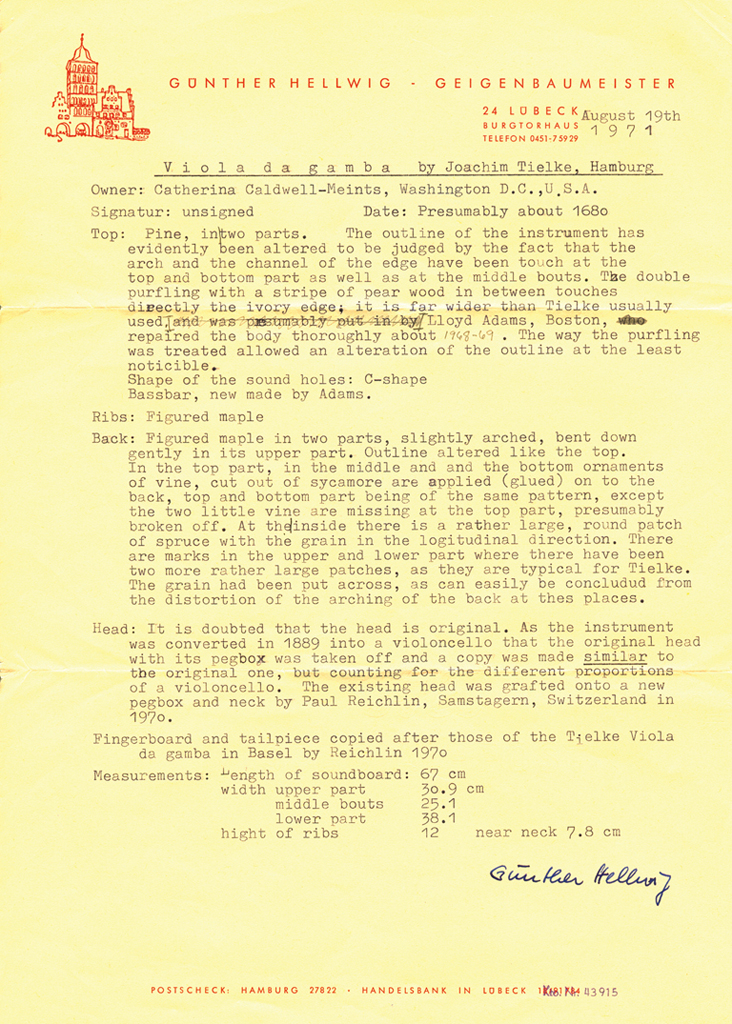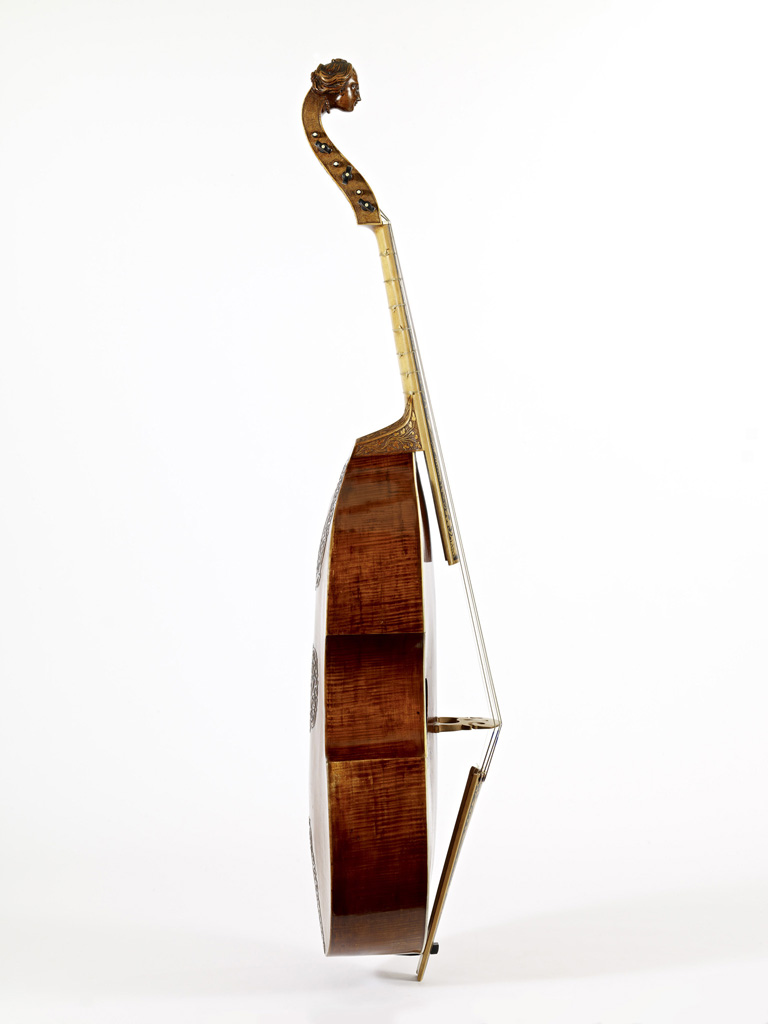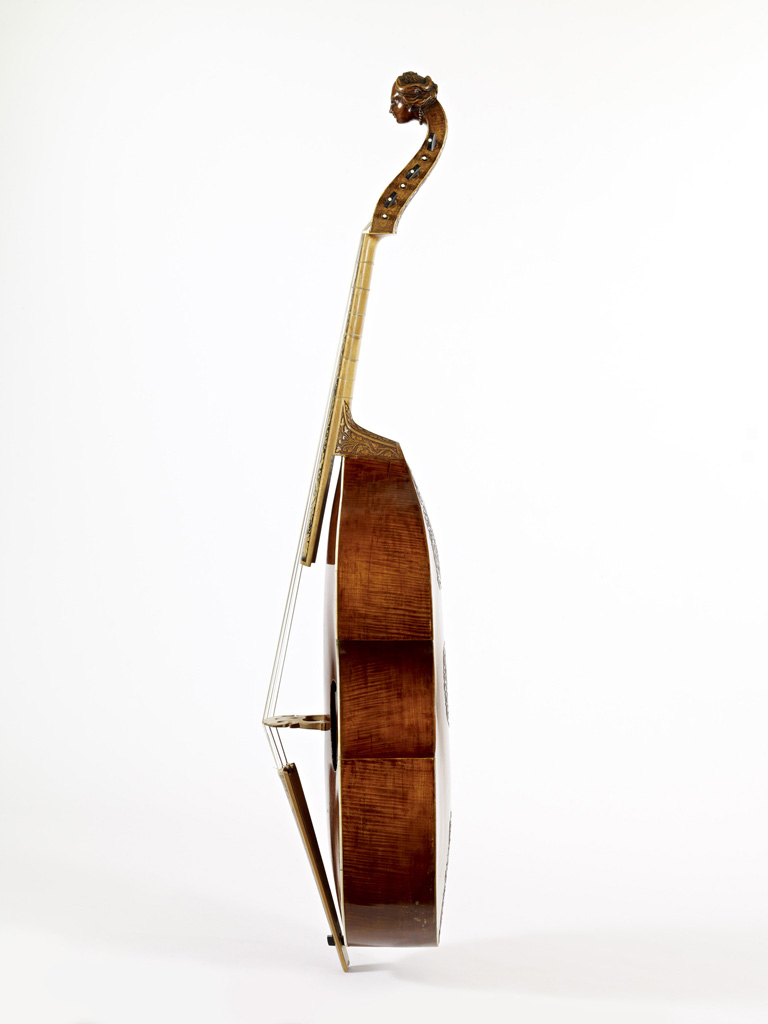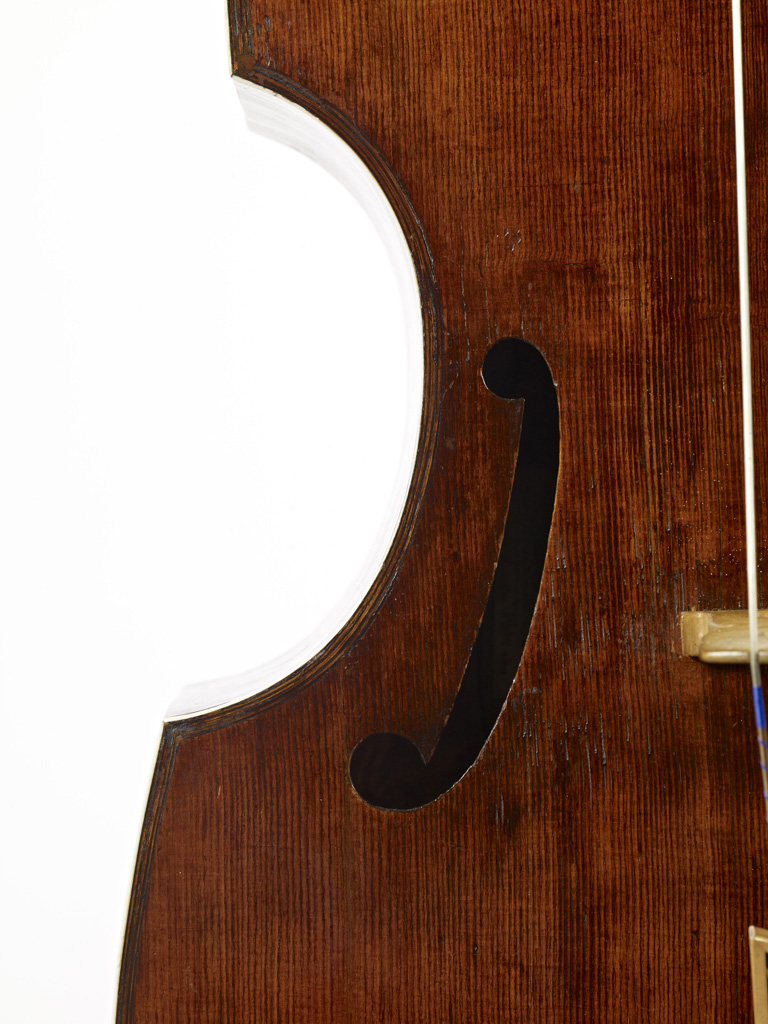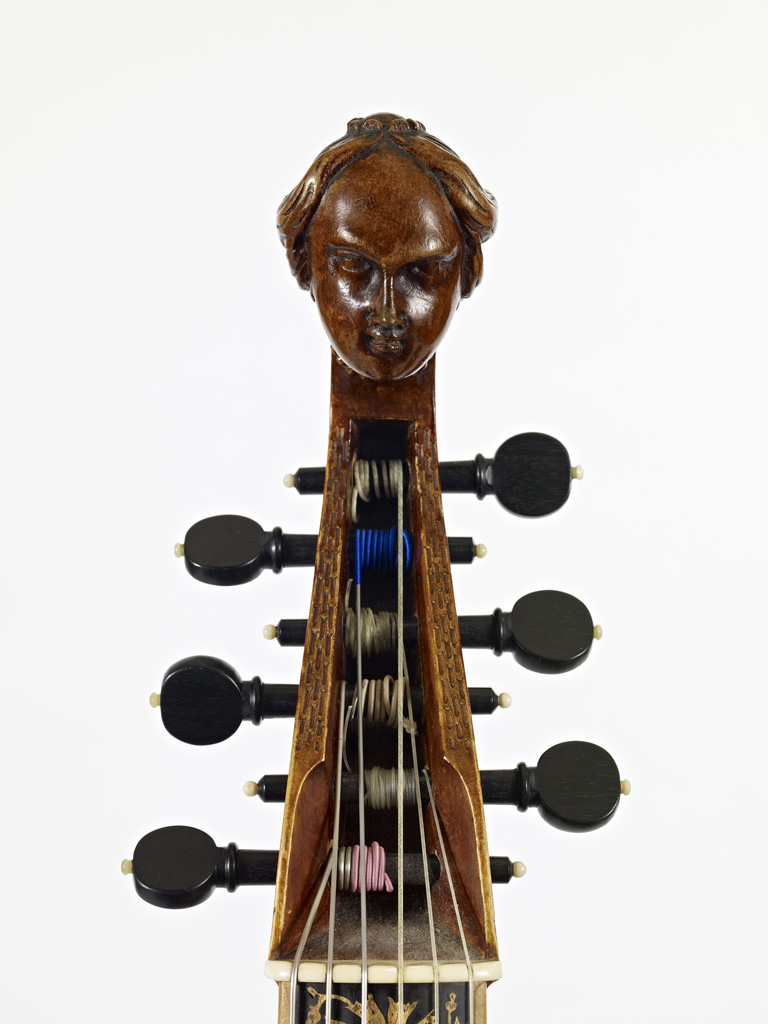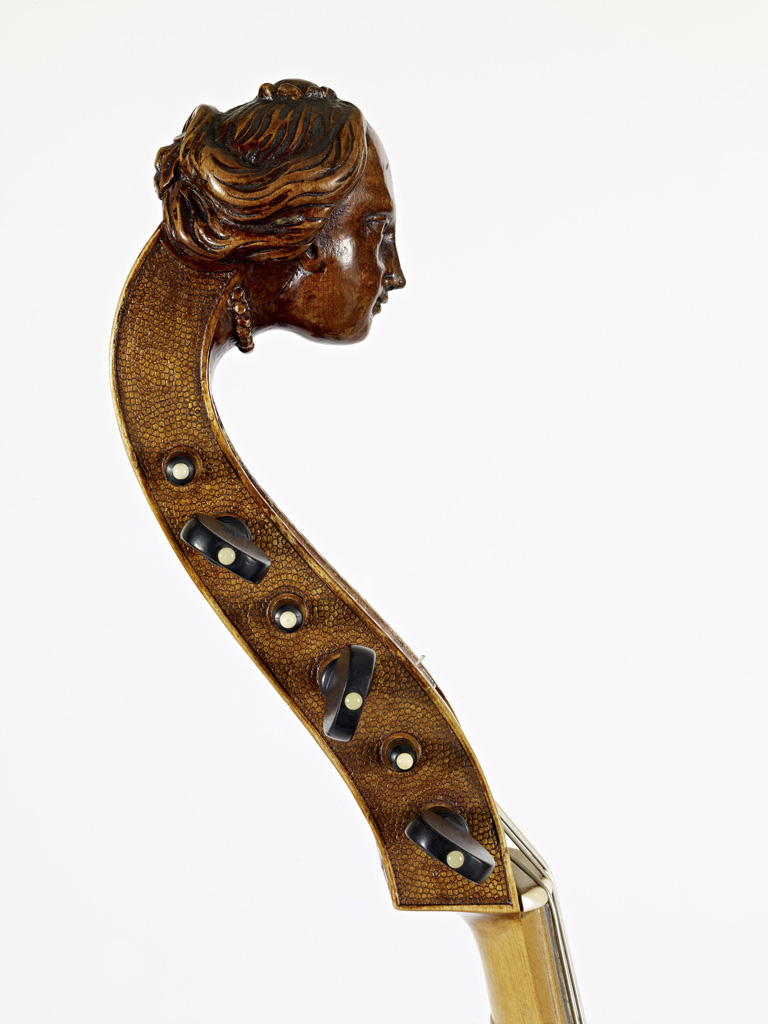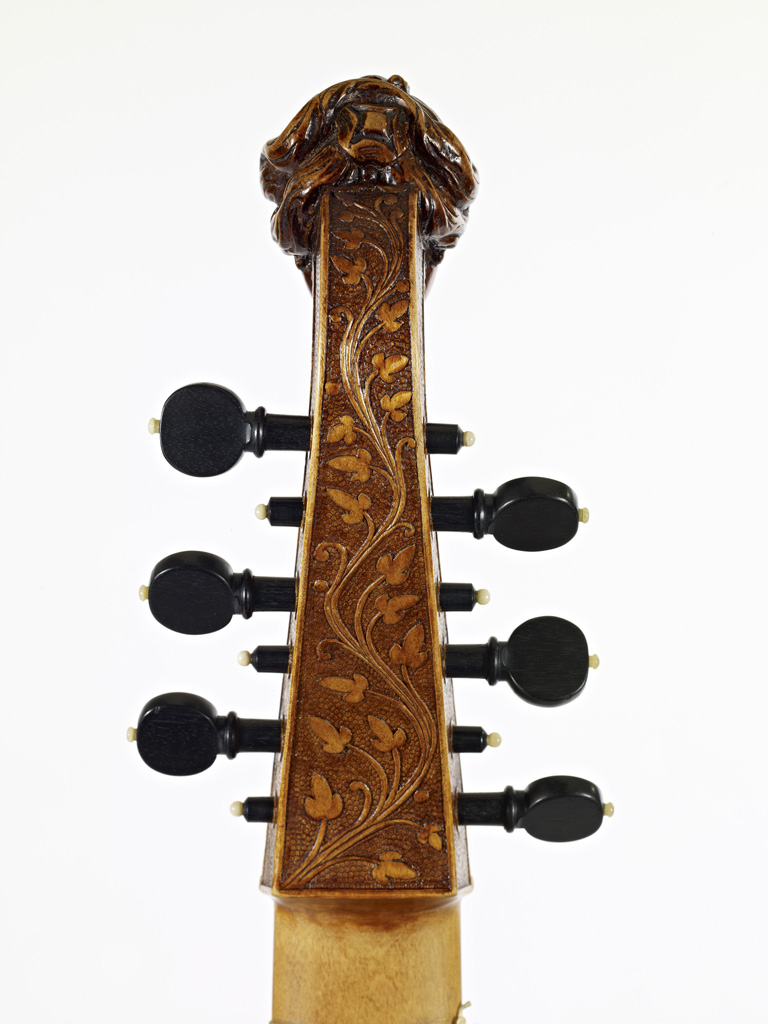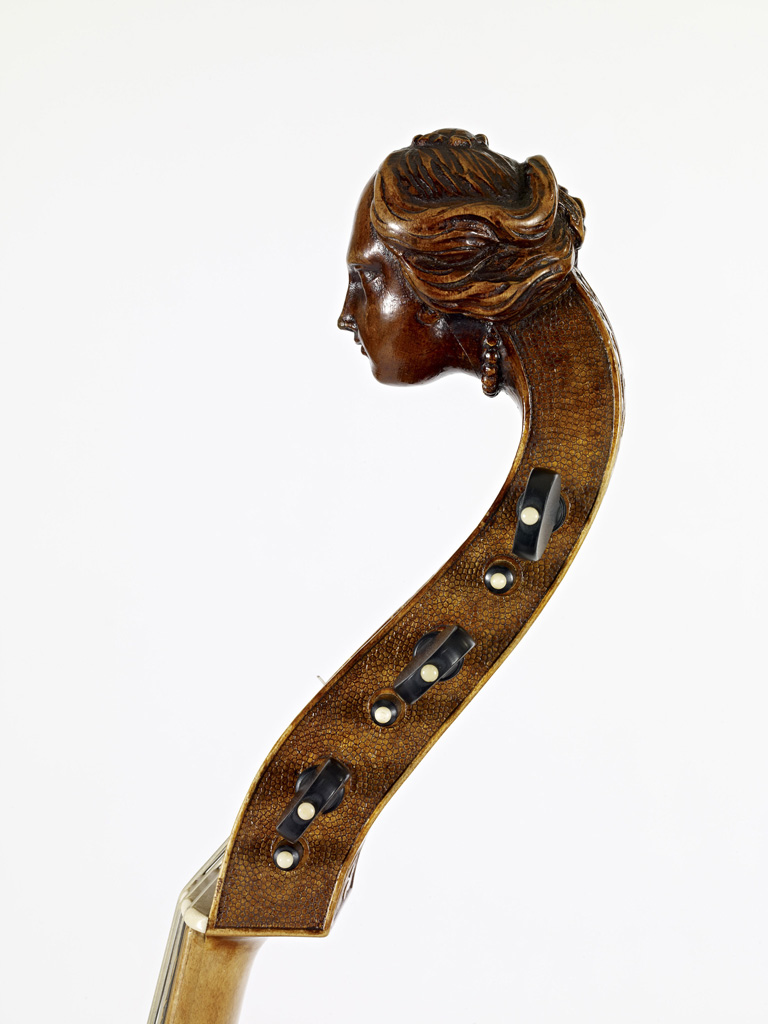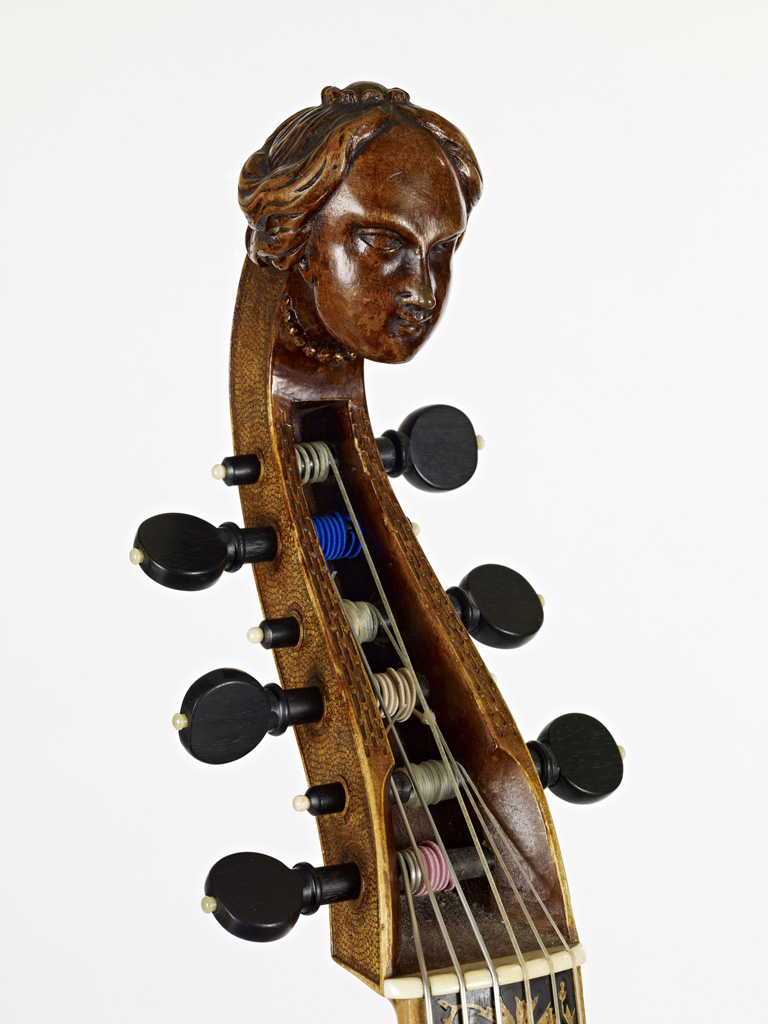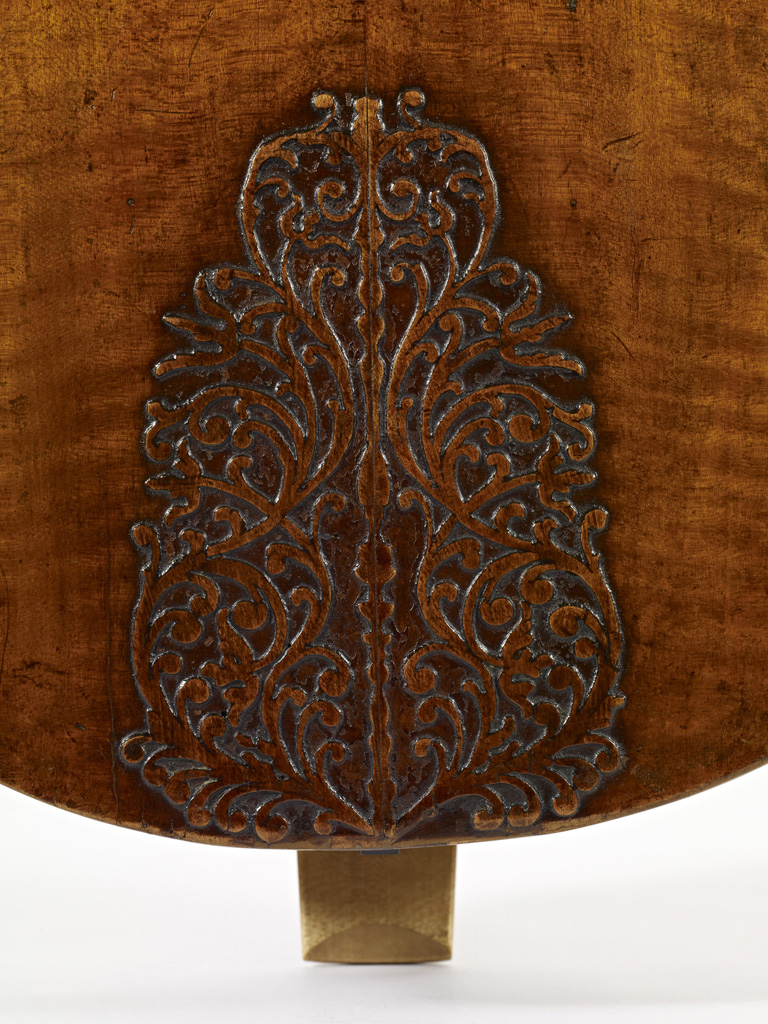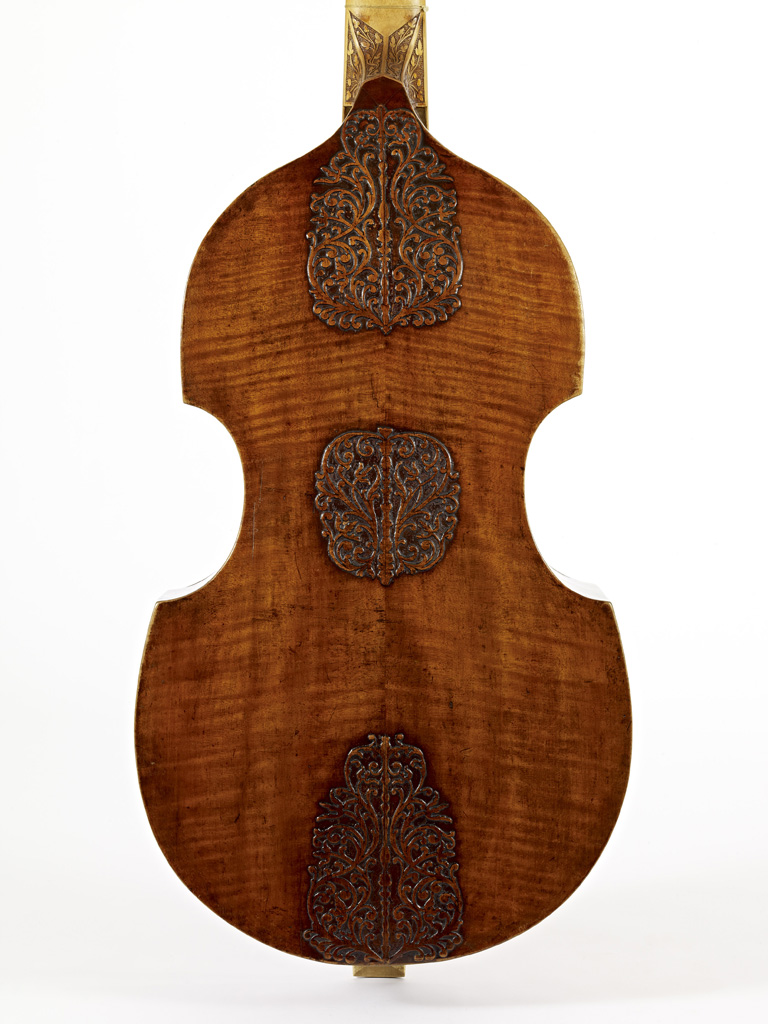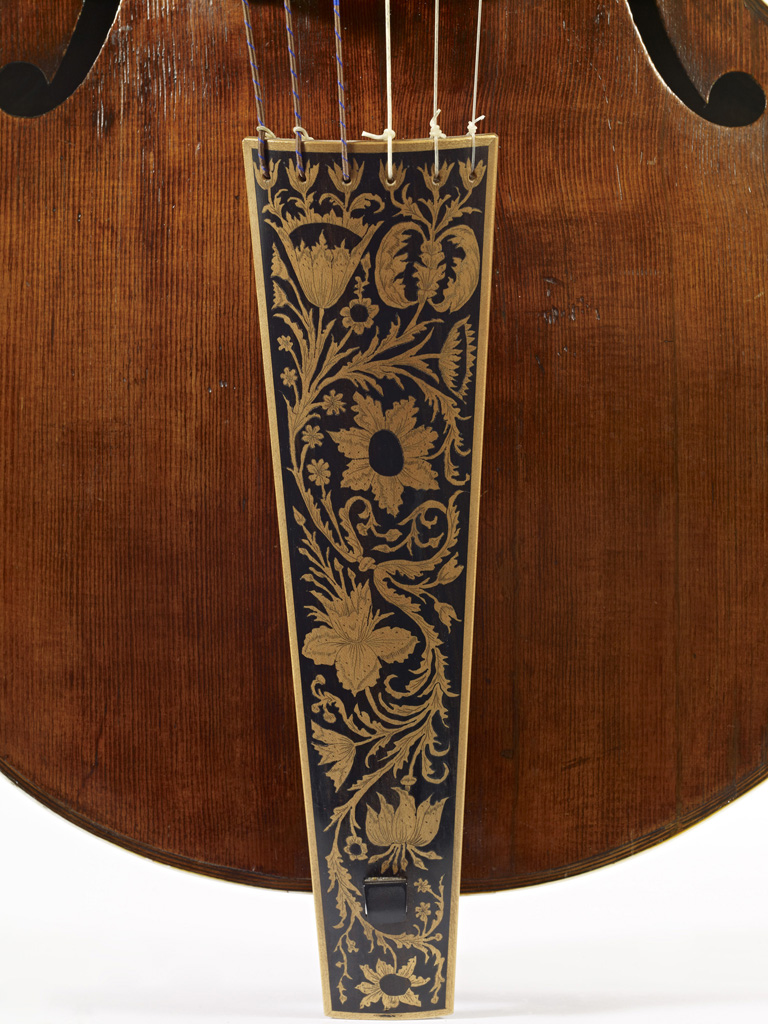Joachim Tielke has long been acknowledged as one of the most highly regarded and important viol makers of the baroque period in Germany. He was and still is famous especially for the extraordinarily lavish decoration found on most of his bowed and plucked string instruments, of which a total of more than 150 have survived into modern times. Most of these are documented in Günther Hellwig’s 1980 monograph on Tielke, whose instruments he had spent many years studying and restoring. In 2011 the author’s son, Friedemann Hellwig, himself a distinguished conservator of musical instruments, published an extensively revised and expanded edition, which remains the only book devoted entirely to a luthier whose primary product was viols.
Tielke was born in 1641 in Königsberg, a city located on the Baltic Sea in East Prussia (since World War II part of Russia and known as Kaliningrad), where his father Gottfried was a judge. By about 1666 he had moved to Hamburg, where the following year he married Catharina Fleischer, daughter of the instrument maker Christoph Fleischer and later aunt of the harpsichord-making brothers Johann Christoph and Carl Conrad Fleischer. Both spouses lived long enough to celebrate their fiftieth wedding anniversary in 1717, for which occasion a book of congratulations was printed that serves as an important source of biographical information. Joachim died in 1719 and Catherina in 1724; although none of their children took up the family trade, the oldest son (named Gottfried after his grandfather) became a professional gambist and worked at the court of Hesse-Kassel beginning about 1700, just after the death of the internationally famous viol player August Kühnel, who had been Kapellmeister there.
Tielke became a citizen of Hamburg in 1669, and his earliest known instruments date from that same year. Friedemann Hellwig’s book records 93 extant bass viols or fragments thereof, 3 barytons, and 8 smaller instruments that are an early form of viola d’amore without sympathetic strings, as well as 5 violins and a cello, 3 pochettes, and 56 plucked instruments (including lutes, theorbos, guitars, and citterns). Most of the viols are decorated with bas-relief carving and elaborate inlays, using ivory, mother of pearl, and exotic woods, supplemented at times by precious materials such as gold, silver, and even jewels. Nearly all have carved heads atop their pegboxes, usually either an easily-recognizable woman wearing a pearl necklace or else a lion. From the mid-1680s onward they normally have arched backs, with a patch inside to provide a flat surface for the soundpost to rest on. Most were made with six strings, but at least three were originally built as seven-string models. Body lengths vary from 59 to 71 cm, revealing that these instruments were not made on a mold.
The Caldwell Collection’s c1685 bass is noteworthy for being one of the earliest to incorporate an arched back, and the fifteenth-oldest surviving viol overall. The 1691 bass is likewise distinctive as one of only four built with a striped back and ribs, in this case using a layout of 13 staves on the back and 7 on the ribs that is matched only by an instrument dated 1697 and now in the Leipzig musical instrument museum.
Apart from violins and pochettes, about half of Tielke’s smaller bowed instruments have a body length of about 34 cm, while the rest are slightly larger at about 39 cm. Most have rib heights ranging from 3.5 to 4.5 cm, comparable to that of a viola and thus suitable for playing under the chin. In contrast, the Caldwell Collection’s example, in addition to being the earliest of this group, is significantly deeper, measuring fully 6.4 cm. For this reason Jim Caldwell felt that it should be considered Tielke’s only surviving true treble viol, intended to be played on the legs rather than on the shoulder. (It is also currently unique in having six rather than five strings.) However, recent research by Kai Köpp and others suggests that the majority of smaller German bowed-string instruments from the late 17th and early 18th centuries that are clearly not violins and violas should instead be classified as violas d’amore. At that time sympathetic strings had not yet become the defining feature of this type of instrument, whose distinctive sound was instead due to the use of metal for its bowed strings, which typically numbered no more than five rather than the six or seven that would later become standard.


